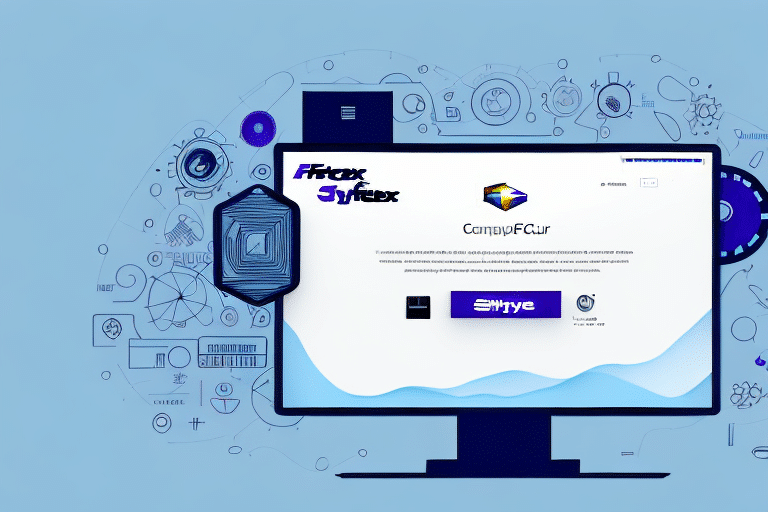Introduction to FedEx Ship Manager with .NET
For organizations that require frequent shipment of packages, FedEx Ship Manager with .NET offers a robust solution to streamline shipping processes. Integrating FedEx's shipping capabilities with the .NET framework enhances functionality, providing businesses with a more efficient and secure way to manage their logistics operations.
What is FedEx Ship Manager?
FedEx Ship Manager is a web-based, integrated shipping solution designed to help businesses create, manage, and track shipments effortlessly. It offers a range of services that allow users to generate shipping labels, customize shipping preferences, select carrier services, and handle international shipments with ease.
Key features include:
- Batch shipping capabilities to process multiple shipments simultaneously.
- Address book management for storing and retrieving frequently used addresses.
- Shipment history tracking to monitor past and current shipments.
- Real-time tracking and notifications to stay updated on shipment statuses.
By leveraging these features, businesses can significantly reduce the time spent on repetitive shipping tasks and improve overall operational efficiency.
Benefits of Using FedEx Ship Manager with .NET
Integrating FedEx Ship Manager with the .NET framework offers several advantages for businesses with complex shipping needs:
- Automation: Automate shipping processes to reduce manual intervention and minimize errors.
- Integration: Seamlessly integrate with existing business systems such as ERP and CRM platforms.
- Advanced Security: Utilize advanced encryption and authentication protocols to protect sensitive shipment data.
- Custom Reporting: Generate detailed reports tailored to specific business requirements.
According to a [FedEx Business Insights report](https://www.fedex.com/en-us/shipping/business-insights.html), businesses that implement automated shipping solutions experience a 25% reduction in shipping-related costs and a 30% improvement in delivery times.
Installing FedEx Ship Manager with .NET
To install FedEx Ship Manager with .NET, follow these steps:
- Visit the FedEx Ship Manager download page.
- Download the .NET version of the software.
- Run the installation wizard and follow the on-screen instructions.
- Ensure your system meets the minimum requirements:
- Windows operating system (Windows 10 or later recommended)
- At least 2GB of RAM
- Minimum of 500MB free hard drive space
- After installation, create a FedEx account or log in with your existing credentials.
Ensuring your system meets these requirements is crucial for the smooth operation of the software.
Setting Up Your FedEx Account for .NET Integration
Before using FedEx Ship Manager with .NET, you need to configure your FedEx account:
- Business Information: Provide accurate business details including billing information and shipping preferences.
- API Credentials: Obtain API credentials from FedEx to enable integration with your .NET applications.
- Shipping Preferences: Customize settings such as preferred shipping carriers, packaging types, and service levels.
For detailed instructions, refer to the FedEx Developer Resources.
Creating a Shipment with FedEx Ship Manager and .NET
Creating a shipment using FedEx Ship Manager with .NET involves the following steps:
- Log in to FedEx Ship Manager.
- Select the Create a Shipment option.
- Enter the recipient's address, package weight, and dimensions.
- Choose the desired service type (e.g., Overnight, 2-Day).
- Customize additional shipping preferences such as insurance and delivery notifications.
- Review and confirm the shipment details.
- Print the shipping label and any necessary documentation.
The integration with .NET allows for saving frequently used shipment information, further speeding up the process.
Advanced Features of FedEx Ship Manager with .NET
FedEx Ship Manager with .NET offers several advanced features to enhance shipping operations:
- Batch Shipping: Process multiple shipments in a single operation, saving time and reducing administrative workload.
- Custom Reporting: Generate detailed reports on shipping activities, costs, and performance metrics.
- System Integration: Integrate with other business systems like inventory management and order processing software.
- Real-Time Tracking: Monitor shipments in real-time and receive automatic updates on shipment statuses.
These features enable businesses to optimize their shipping processes, improve accuracy, and enhance overall logistics management.
Security Considerations
When using FedEx Ship Manager with .NET, it is essential to prioritize security to protect sensitive business information:
- Data Encryption: Ensure that all data transmitted through the software is encrypted using industry-standard protocols.
- Authentication: Implement strong authentication measures to restrict access to authorized personnel only.
- Regular Updates: Keep the software updated to the latest version to protect against vulnerabilities.
- Secure Connections: Use VPNs or secure networks to access the software, especially when handling confidential shipments.
For more information on securing your FedEx Ship Manager installation, visit the FedEx Shipping Security page.
Troubleshooting Common Issues
While using FedEx Ship Manager with .NET, you might encounter some common issues. Here are solutions to address them:
- Installation Problems: Ensure your system meets all requirements and that you have administrative privileges during installation.
- Network Connectivity: Verify your internet connection and firewall settings to ensure FedEx servers are accessible.
- Printing Errors: Check printer settings and ensure that the correct printer is selected within the software.
- Authentication Failures: Double-check your login credentials and ensure your account is active and properly configured.
If issues persist, consult the FedEx Help Center or contact FedEx customer support for assistance.
Optimizing Your Shipping Process
To maximize the benefits of FedEx Ship Manager with .NET, consider implementing the following tips:
- Customize Shipping Preferences: Tailor shipping options to align with your business needs and customer expectations.
- Efficient Packaging: Develop a standardized packaging strategy to reduce costs and improve shipping efficiency.
- Utilize Additional Services: Take advantage of FedEx services like pickup scheduling and delivery notifications to enhance customer experience.
- Monitor Performance Metrics: Regularly review shipping reports to identify areas for improvement and optimize your logistics strategy.
Implementing these strategies can lead to significant improvements in shipping efficiency, cost reduction, and customer satisfaction.
Conclusion
Integrating FedEx Ship Manager with .NET provides businesses with a powerful tool to manage their shipping operations effectively. With features like automation, advanced security, and seamless system integration, organizations can streamline their logistics processes, reduce costs, and enhance overall efficiency. By following best practices and leveraging the advanced capabilities of FedEx Ship Manager, businesses can achieve a competitive edge in their shipping and logistics operations.






















